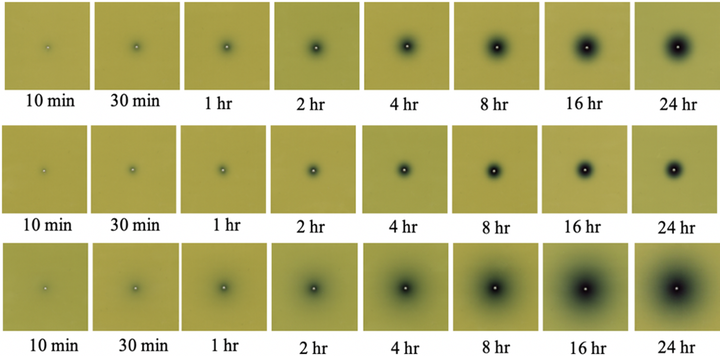Absorbed dose distributions from beta‐decaying radionuclides: Experimental validation of Monte Carlo tools for radiopharmaceutical dosimetry
Abstract
The aim of this project is to experimentally validate the Monte Carlo generated absorbed doses from the beta particles emitted by 90Y and 177Lu using radiochromic EBT3 film‐based dosimetry.
Line sources of 90Y and 177Lu were inserted longitudinally through blocks of low‐density polyethylene and tissue‐equivalent slabs of cortical bone and lung equivalent plastics. Radiochromic film (Gafchromic EBT3) was laser cut to accommodate orthogonal line sources of radioactivity, and the film was sandwiched intimately between the rectangular blocks to achieve charged particle equilibrium. Line sources consisted of plastic capillary tube of length (13 ± 0.1) cm, with 0.42‐mm inner diameter and a wall thickness of 0.21 mm. 90Y line sources were prepared from a solution of dissolved 90Y resin microspheres. 177Lu line sources were prepared from an aliquot of 177Lu‐DOTATATE. Film exposures were conducted for durations ranging from 10 min to 38 h. Radiochromic film calibration was performed by irradiation with 6‐MV‐bremsstrahlung x rays from a calibrated linear accelerator, in accordance with literature recommendations. Experimental geometries were precisely simulated within the GATE Monte Carlo toolkit, which has previously been used for the generation of dose point kernels.
The mean percentage difference between measured and simulated absorbed doses were 5.04% and 7.21% for 90Y and 177Lu beta absorbed dose in the range of (0.1–10) Gy. Additionally, 1D gamma analysis using a local 10%/1 mm gamma criterion was performed to compare the absorbed dose distributions. The percentage of measurement points passing the gamma criterion, averaged over all tests, was 93.5%. We report the experimental validation of Monte Carlo derived beta absorbed dose distributions for 90Y and 177Lu, solidifying the validity of using Monte Carlo‐based methods for estimating absorbed dose from beta emitters.
Overall, excellent agreement was observed between the experimental beta absorbed doses in the linear region of the radiochromic film and the GATE Monte Carlo simulations demonstrating that radiochromic film dosimetry has sufficient sensitivity and spatial resolution to be used as a tool for measuring beta decay absorbed dose distributions.
